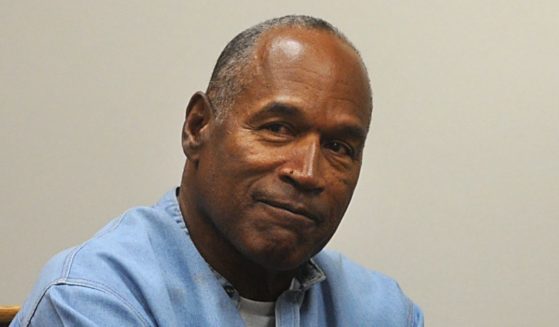How Low Can the Left Go?
I was sitting in a restaurant yesterday and could not help overhearing a middle-aged couple in the booth behind me. The wife was remarking to her husband how terribly the Democrats are treating Brett Kavanaugh. “I sometimes wonder how low the left can go,” she said.
Her husband was dismissive of her remarks and said, “Don’t worry about it. These Supreme Court hearings are always like this. It’s nothing new.”
His remark got me thinking — is the left’s outrageous behavior at a new low or am I just a biased Kavanaugh supporter?
The first Senate confirmation hearing ever conducted for a Supreme Court nominee was in 1873. There were allegations that the nominee, George Williams, had misappropriated government funds. The hearing was closed to the public and the questions were strictly limited to the misappropriation issue and nothing else. Following the hearing, Williams’ name was withdrawn from consideration.
The next Senate hearing wasn’t until 1916 for Woodrow Wilson’s nomination of Louis Brandeis. The hearing was open to the public and was the first hearing that was vitriolic but not on a personal level.
Brandeis had often espoused the concept that the Supreme Court should not simply decide cases on facts and law but should also consider underlying “social facts,” surrounding the case. This judicial philosophy was strenuously argued during the hearing and went on for four months.
The Senate committee eventually voted 10 to 8 in favor of Brandeis and the full Senate voted 47 to 22 to confirm him.
The first Senate hearing on a Supreme Court nominee that involved scurrilous and personal attacks against the nominee was in 1939 with Franklin D. Roosevelt’s nomination of Felix Frankfurter.
Frankfurter was attacked on many personal issues, including the fact he was a Jew, an immigrant who didn’t speak English until after he was 12 years old, was a founding member of the ACLU and was considered “out of the norm” on the Constitution.
This was also the first hearing where committee members were free to ask Frankfurter questions on anything they pleased.
There was a reason the Frankfurter hearing broke all the traditional rules on questioning a Supreme Court nominee.
Two years before the Frankfurter hearing, Hugo Black was approved by the Senate after a closed hearing. Not long after being approved, it came to light that Black was a lifetime member of the KKK.
With this revelation, the Senate was determined that no stone would be unturned in future Senate confirmation hearings and the Frankfurter hearing was the result. Frankfurter was eventually confirmed by the Senate.
In 1955, the Senate made it the standard practice to make all Senate confirmations open to the public and the nominee could be openly questioned on all matters. However, a precedent was soon established that the questions should be on judicial philosophy and past decisions and not on a nominee’s personal life.
Then came July 1, 1987 — when President Ronald Reagan nominated Robert Bork to the Supreme Court. Bork’s Senate confirmation hearing changed everything about the confirmation process — possibly forever.
Bork was the father of the “original intent” philosophy of interpreting the U.S. Constitution, in sharp contrast to the view that the Constitution is a living and changeable document as per the changing times.
The liberals would not tolerate the introduction of this philosophy since it would fly in the face of their party’s progressive philosophy that embraced social change. They viewed Bork as a declaration of political war against everything they stood for and, in turn, they declared war against Bork’s confirmation.
The left’s war against Bork was a no-holds-barred attack. They were out to destroy him, personally and professionally. The all-out attack was unprecedented in its viciousness. Bork was vilified and defamed in every imaginable way with the full support of the media.
His 58 to 42 defeat in the Senate still stands as the worst defeat of any nominee to the Supreme Court.
The next major nomination to establish a new ground for Supreme Court confirmations was in 1991 with George H.W. Bush’s nomination of Clarence Thomas.
The Senate Judiciary Committee’s Democrats undertook a plan of attack against Thomas that closely mirrors the Democrat attacks on Kavanaugh.
In the Thomas hearings, as the Judiciary Committee was nearing the end of their examination of Thomas and it appeared that he would be easily confirmed to the Supreme Court, a woman suddenly appeared to make charges of sexual harassment against him.
The accuser, Anita Hill, was a co-worker of Thomas and testified that he tried to engage her in discussions of pornography, pubic hair and creative use of Coke bottles.
The Democrats piled-on Thomas unmercifully until Thomas, a black man, told the committee that the Democrats’ behavior toward him constituted a “high-tech lynching.”
This apparently shamed the Democrats into submission and Thomas went on to be confirmed to the Supreme Court.
Now, we have the Democrat attack on Supreme Court nominee Brett Kavanaugh. There are some aspects of the current Democrat attack on Kavanaugh that are similar to their attack on Thomas, but in other ways, they are quite different.
Anita Hill was used as a last-minute accuser against Thomas, but her accusations were recent history where there were available witnesses who could be questioned about the allegations.
The attacks on Kavanaugh break new, low ground in Senate confirmation hearings for Supreme Court nominees.
To begin, the evidence that was to be used against Kavanaugh was in possession of a Democrat member of the Senate Judiciary Committee for months during the examination of Kavanaugh and should have been presented as evidence against Kavanaugh during that time but was not.
The Democrat senator withheld the evidence until the examination of Kavanaugh was closed and a date was set for a committee vote. Only then did she make the Republicans on the committee aware of it.
The evidence was an anonymous letter from a woman who claimed that when she was 15 and Kavanaugh was 17, he held her down on a bed during a party and attempted to rape her. The Democrats released the accuser’s name through a press leak, forcing her to defend what she alleged in her letter.
She also purportedly wrote that a friend of Kavanaugh’s was also in the room and rescued her from the attack.
The accuser doesn’t remember the date of the alleged attack, the house where it allegedly occurred, or anyone else who attended the party.
The actual contents of her letter are unknown to Republicans because the senator will not allow them to see it.
Another first-time tactic used by the Democrats during the Kavanaugh hearing was constant interruptions of the hearing by Democrat members on the committee during witness testimony and employing court spectators to stage loud protests in the courtroom, causing a halt to the proceedings.
It appears that “How low can the left go?” is a question that cannot really be answered.
The reason it cannot be answered is that the left has used tactics against Republican nominees to the Supreme Court that have been increasingly outrageous and contrary to Senate traditions and rules and common courtesy, bringing the hearings lower level each time.
The Democrats set a dramatic new low for the Senate Judiciary Committee in the Bork confirmation. The Thomas attack was even uglier and lower. The current Democrat attack on Kavanaugh is breathtakingly ugly and reaches the depths of true depravity.
If the Democrats can find a way to go lower on a future Republican nominee, it may mark the end of Senate Judiciary Confirmation hearings. The demand for decency will require a method of confirmation where the disgusting actions of Democrats are not given a public stage.
The views expressed in this opinion article are those of their author and are not necessarily either shared or endorsed by the owners of this website. If you are interested in contributing an Op-Ed to The Western Journal, you can learn about our submission guidelines and process here.
Truth and Accuracy
We are committed to truth and accuracy in all of our journalism. Read our editorial standards.











